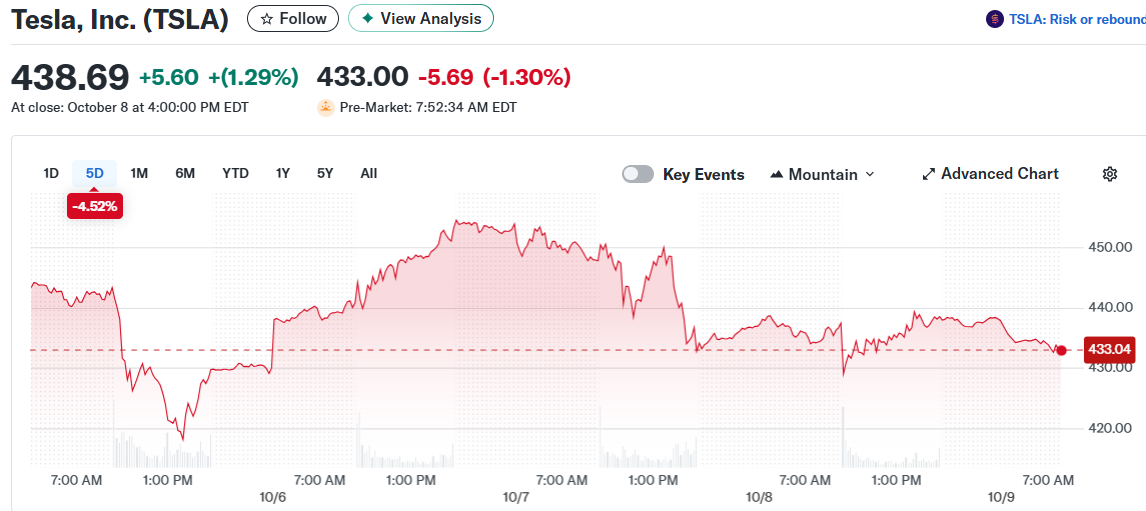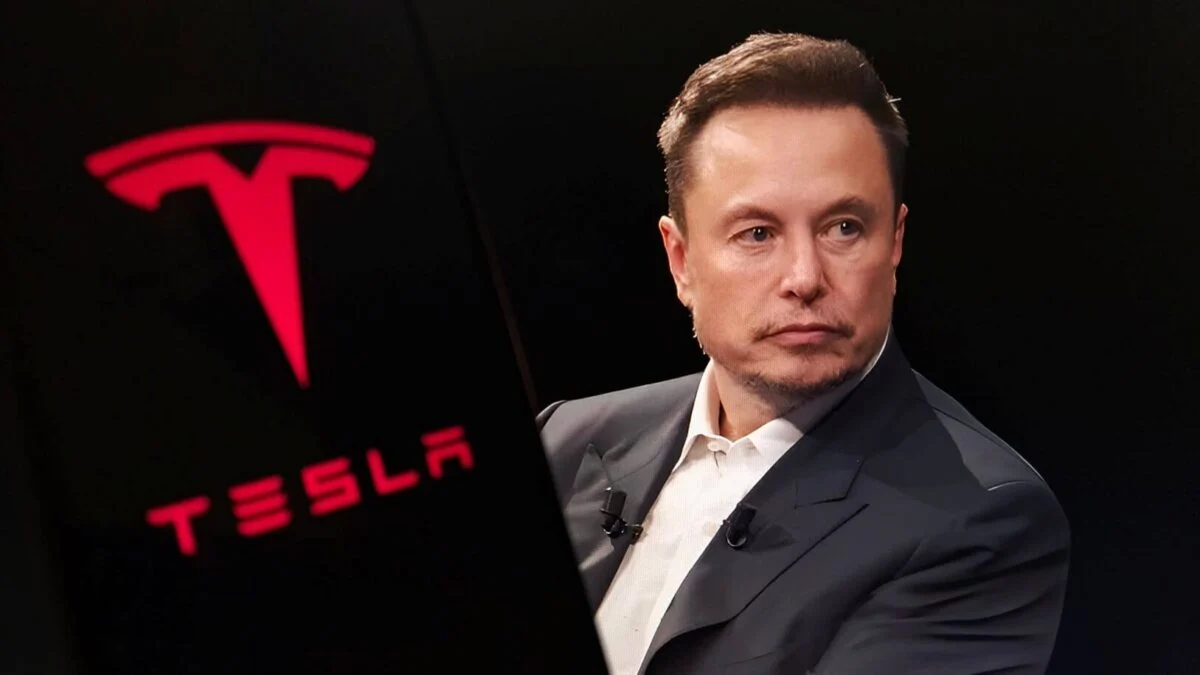TLDR
- Elon Musk could earn tens of billions from Tesla’s $878 billion pay package without meeting most performance goals, with just two easier targets netting him $26 billion.
- Tesla unveiled lower-priced Standard Model 3 ($36,990) and Model Y ($39,990) with full self-driving hardware to reverse falling sales and expand its Robotaxi-ready fleet.
- Vehicle sales goals in Musk’s compensation plan are “exceptionally easy” according to experts, requiring only 1.2 million cars annually versus 1.7 million sold in 2024.
- Product development goals use vague language including “advanced driving system” and “bot” definitions that lack industry-standard meanings, potentially allowing easier achievement.
- Tesla posted record Q3 2025 deliveries of 497,100 vehicles, up 7% year over year, though production lagged at 447,450 units during the quarter.
Tesla rolled out Standard versions of its Model 3 and Model Y on Tuesday. These lower-cost options start at $36,990 and $36,990 respectively.

The timing comes as the company faces pressure from falling sales. It also arrives while Tesla’s board pushes a controversial $878 billion compensation package for CEO Elon Musk.
The new Standard models ship with Tesla’s camera-based hardware platform. This enables Full Self-Driving (Supervised) capabilities that customers can activate through a subscription. Both vehicles offer over 300 miles of range per charge.
Tesla’s website shows Standard Model Y deliveries beginning November to December 2025. Standard Model 3 deliveries start December 2025 to January 2026.
The lower price points drop below the $40,000 threshold. This move comes after the federal $7,500 electric vehicle tax credit expired on September 30.
Tesla posted record third-quarter deliveries of 497,100 vehicles. That’s up more than 7% from the previous year. However, production during the quarter reached only 447,450 units.
This production gap raises questions about fourth-quarter performance. The pull-forward in demand from customers rushing to claim the expiring tax credit may create challenges ahead.
Compensation Package Details
The Tesla board offered Musk the largest executive pay package in corporate history in September. Directors said he would need to achieve “Mars-shot milestones” to earn the full $878 billion in Tesla stock over 10 years.
The board’s proposal stated Musk would receive “zero” unless he meets “incredibly ambitious” goals. These targets involve robotics, autonomous driving, stock value, and profits.
Yet a Reuters analysis shows Musk could collect over $50 billion without meeting most targets. He could earn $26 billion by hitting just two easier goals with modest stock growth.
That amount exceeds the combined lifetime pay of the next eight highest-paid CEOs. This group includes Mark Zuckerberg, Larry Ellison, Tim Cook, and Jensen Huang.
Automotive experts called Musk’s vehicle sales goals “exceptionally easy to achieve.” Selling 1.2 million cars annually over the next decade would earn him $8.2 billion in stock if Tesla’s market value grows from $1.4 trillion to $2 trillion by 2035. Tesla sold 1.7 million vehicles in 2024.
Vague Performance Goals
Three product-development goals use language that could allow hefty payouts without boosting profit. Robotics and autonomous-driving experts who reviewed the goals for Reuters flagged this issue.
One target requires 10 million subscriptions to Tesla’s Full Self-Driving software. The goal doesn’t require the system to become fully autonomous. It only mandates an “advanced driving system.”
William Widen, a University of Miami law professor specializing in autonomous driving, called this a “made-up term” with no industry-standard definition. Experts noted Tesla could meet this target by dropping the current $8,000 upfront or $99 monthly price. China’s BYD already offers a similar system for free.
Another goal requires one million robotaxis in commercial operation without a human driver in the vehicle. Four autonomous-vehicle experts said this could be interpreted to allow humans controlling vehicles remotely or from the passenger seat. Tesla currently uses this approach in its small-scale robotaxi test in Austin, Texas.
The robot target requires one million robots but doesn’t specify “humanoid.” It defines “bot” as “any robot or other physical product with mobility using artificial intelligence.” Christian Rokseth, an analyst with Humanoid.guide, called it “totally vague.”
Hitting any two product goals plus a $2.5 trillion valuation pays Musk $26.4 billion in stock. Three targets and a $3 trillion valuation pays him $54.6 billion. This means Musk could earn these amounts without delivering driverless Teslas.
Musk’s hardest performance targets involve profit. The directors set eight profit goals between $50 billion and $400 billion in earnings before interest, tax, depreciation and amortization. Tesla’s 2024 earnings were $16.6 billion.
Tesla’s valuation could reach $2 trillion with 6.4% annual share growth over the next decade. That’s slower than the S&P 500’s 8.5% annual average over 30 years and less than half the Nasdaq’s 13.2% average.
Seth Goldstein, a Morningstar analyst tracking Tesla, said its valuation could easily hit $3 trillion or more with market-average performance. The company’s value is already largely based on “future products that don’t exist today.”
The new Standard models will expand the pool of potential buyers. They also grow the base of vehicles that could eventually join Tesla’s robotaxi network when software is ready and regulations allow. Real-world testing is already underway in Austin.
Tesla shares trade at more than 250 times earnings. Lower-cost models could pressure profit margins. The Robotaxi pilot remains limited in scope, and regulatory approvals may take longer than expected.
Stay Ahead of the Market with Benzinga Pro!
Want to trade like a pro? Benzinga Pro gives you the edge you need in today's fast-paced markets. Get real-time news, exclusive insights, and powerful tools trusted by professional traders:
- Breaking market-moving stories before they hit mainstream media
- Live audio squawk for hands-free market updates
- Advanced stock scanner to spot promising trades
- Expert trade ideas and on-demand support



